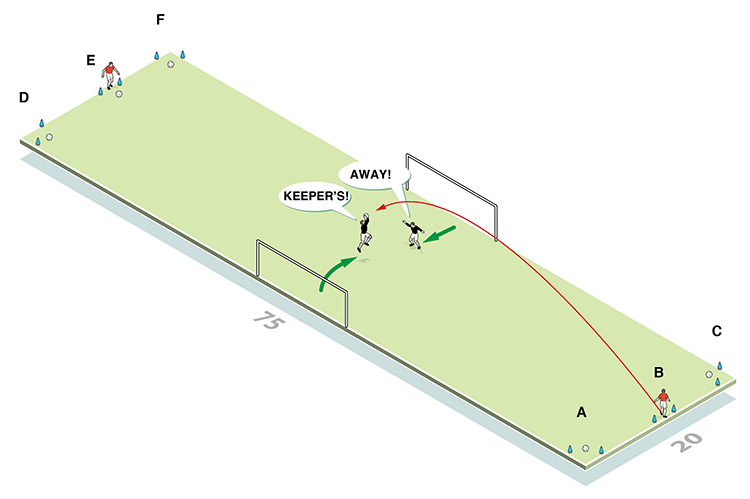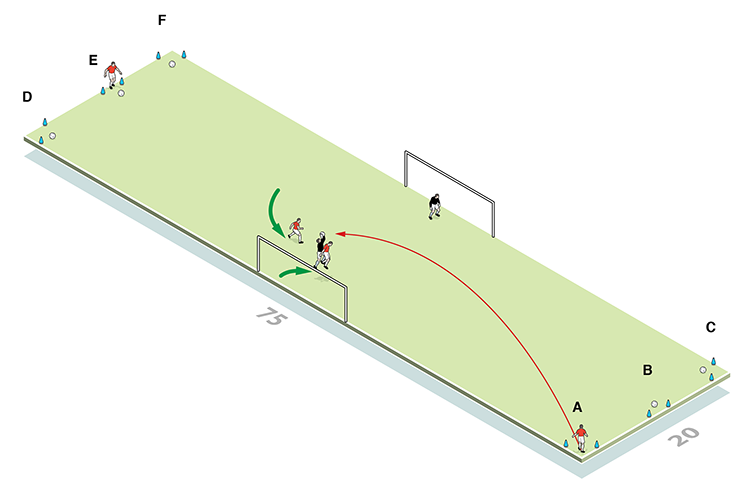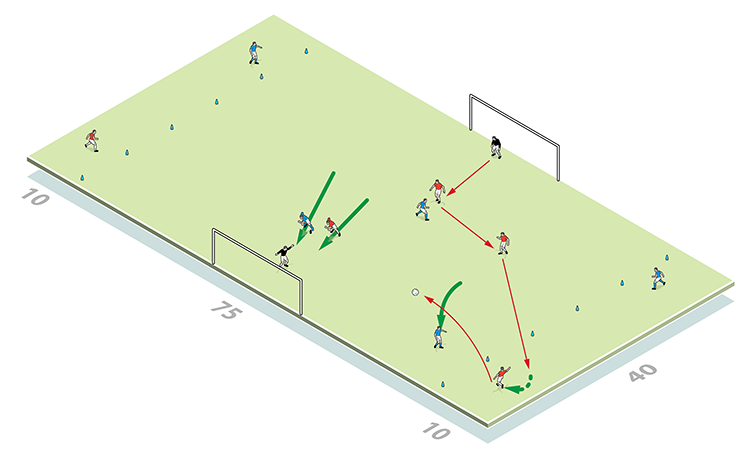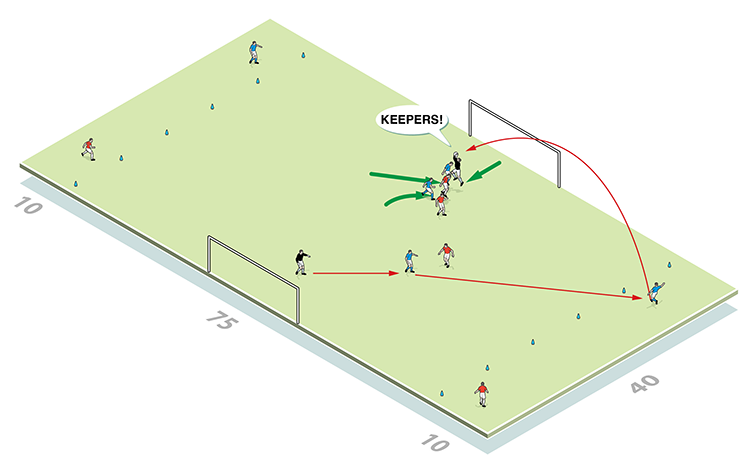




OUR BEST EVER OFFER - SAVE £100/$100
JOIN THE WORLD'S LEADING PROFESSIONAL DEVELOPMENT PROGRAMME
- 12 months membership of Elite Soccer
- Print copy of Elite Player & Coach Development
- Print copy of The Training Ground
You are viewing 1 of your 1 free articles
Crossing for keepers
Coach your goalkeepers in the basics of anticipating crosses and dominating their area. Having a trustworthy, proficient keeper positively influences the mindsets and playing abilities of all players in front of him, so this is a vital position in any team.
| Area | 95x40 yards |
| Equipment | Balls, cones, goals |
| No. of Players | Up to 5v5 plus keepers |
| Session Time | Session 25mins, development 20mins, game 15mins |
This is a session for goalkeepers that coaches them in the basics of anticipating crosses and dominating their area. Having a trustworthy, proficient keeper positively influences the mindsets and playing abilities of all players in front of him, so this is a vital position in any team.
Recently, we asked our keeper to put himself in a more advanced position than normal given that we were dealing with a tall opposition striker. His actions relieved the pressure on our centre-backs.
What do I get the players to do?
We begin with a basic crossing set-up, as shown, with a goal placed centrally on each 75-yard line. Crosses from each side are delivered from any of three points on the 20-yard touchline (1a/1b), and should be hung in the air giving the keeper time to assess and adjust the flight of the ball.
1a

1b

How do I progress the session?
In the first progression, when a keeper catches a cross from one server he must throw the ball out to the other. Next, only serve from one side with both keepers challenging for the same ball (2a). Now both have a decision to make - do they come to catch the cross, or call ‘away’? Also vary the crosses, from high balls to low centres. Finally, add attackers so crosses are opposed (2b).
2a

2b

What are the key things to look out for?
The keeper needs to be facing the ball with his weight centred, ready to take off. Next, how far from goal does he start? Is he able to get to crosses 6-9 yards from goal, or could the crosser potentially score directly from a cross?
Feet should be adjusted as soon as he has assessed the flight of ball, and discourage big strides because these can be awkward to adjust.
The keeper should catch the ball at a high point, looking to prevent an attacker from getting in front of him.
Good communication is key also, and if staying ‘at home’, he’ll need to get back into a good position to prepare for a potential shot.
How do I put this into a game situation?
Set up as shown, 3v3 in the middle with both teams having a player in the attacking half of each wide area. He is two-touch to encourage quick and frequent crosses, and teams can only score from a ball that goes out to the wide areas (3a).
3a

The small-sided game brings in the use of defenders and aids communication skills (3b), as well as cementing other practised elements.
3b

Related Files
Editor's Picks
Attacking transitions
Deep runs in the final third
Using the goalkeeper in build-up play
Intensive boxes drill with goals
Penetrating the final third
Creating and finishing
My philosophy
Pressing initiation
Compact team movement
Coaches' Testimonials

Alan Pardew

Arsène Wenger

Brendan Rodgers

Carlos Carvalhal

José Mourinho

Jürgen Klopp

Pep Guardiola

Roy Hodgson

Sir Alex Ferguson

Steven Gerrard
Related
Coaches' Testimonials

Gerald Kearney, Downtown Las Vegas Soccer Club

Paul Butler, Florida, USA

Rick Shields, Springboro, USA

Tony Green, Pierrefonds Titans, Quebec, Canada
Join the world's leading coaches and managers and discover for yourself one of the best kept secrets in coaching. No other training tool on the planet is written or read by the calibre of names you’ll find in Elite Soccer.
In a recent survey 92% of subscribers said Elite Soccer makes them more confident, 89% said it makes them a more effective coach and 91% said it makes them more inspired.
Get Monthly Inspiration
All the latest techniques and approaches
Since 2010 Elite Soccer has given subscribers exclusive insight into the training ground practices of the world’s best coaches. Published in partnership with the League Managers Association we have unparalleled access to the leading lights in the English leagues, as well as a host of international managers.
Elite Soccer exclusively features sessions written by the coaches themselves. There are no observed sessions and no sessions “in the style of”, just first-hand advice delivered direct to you from the coach.






